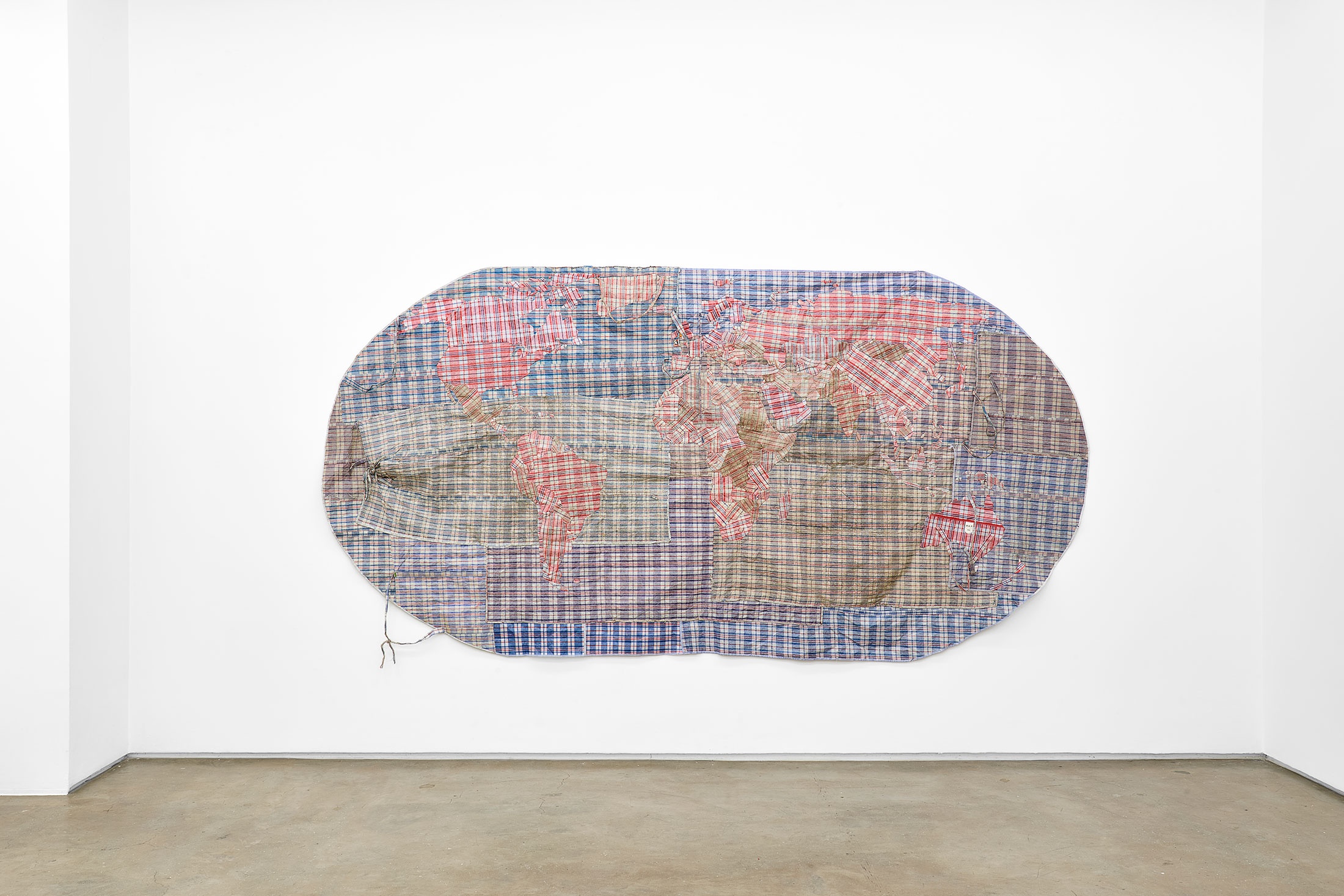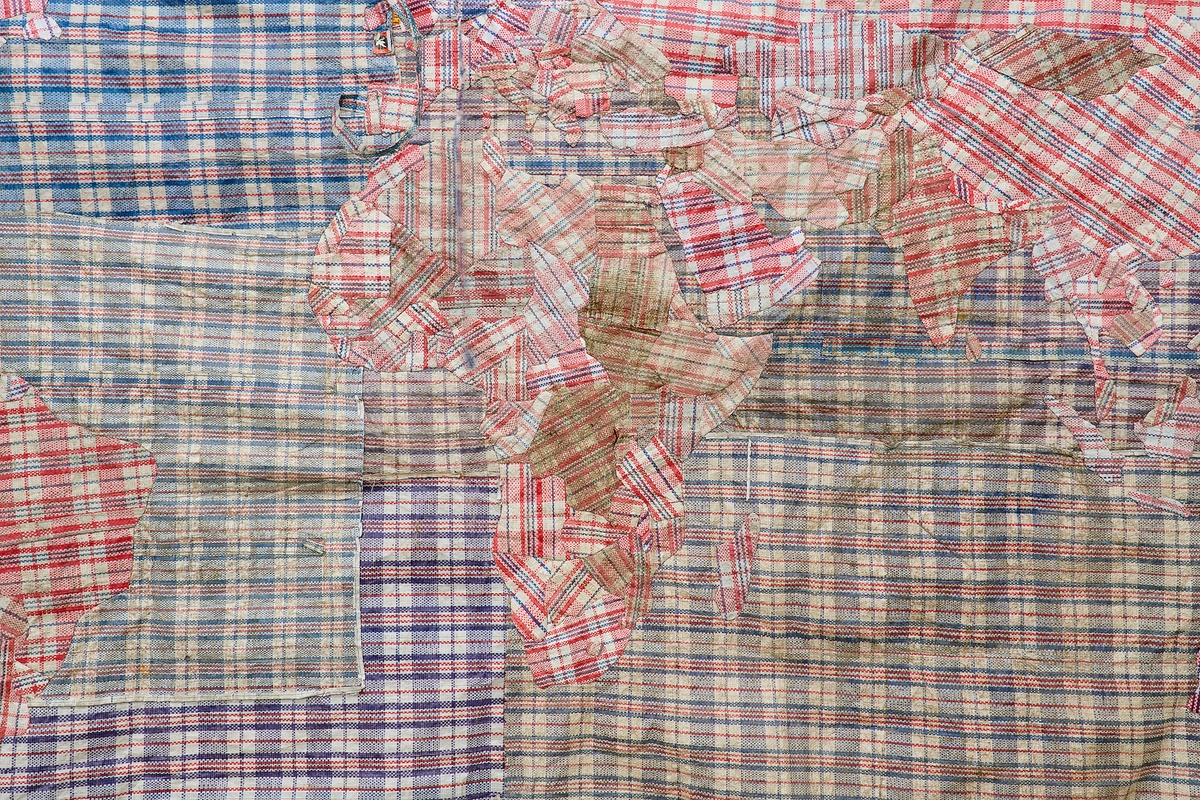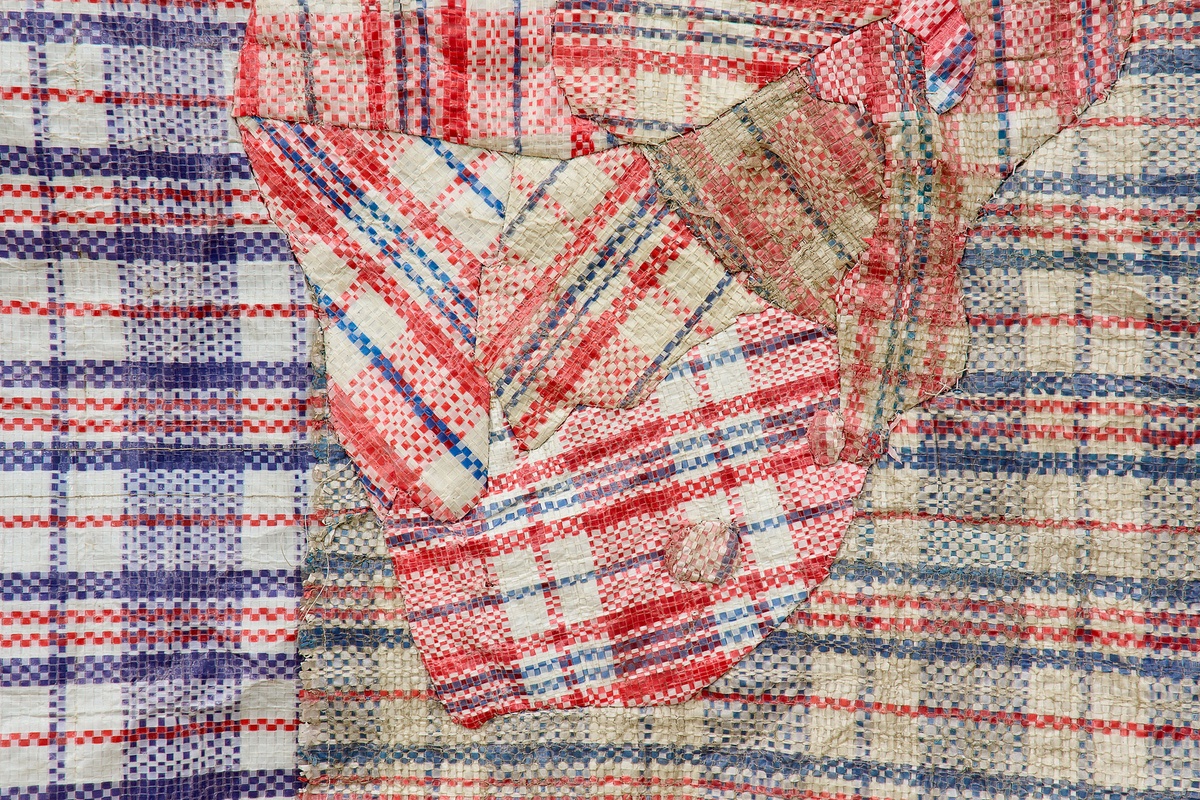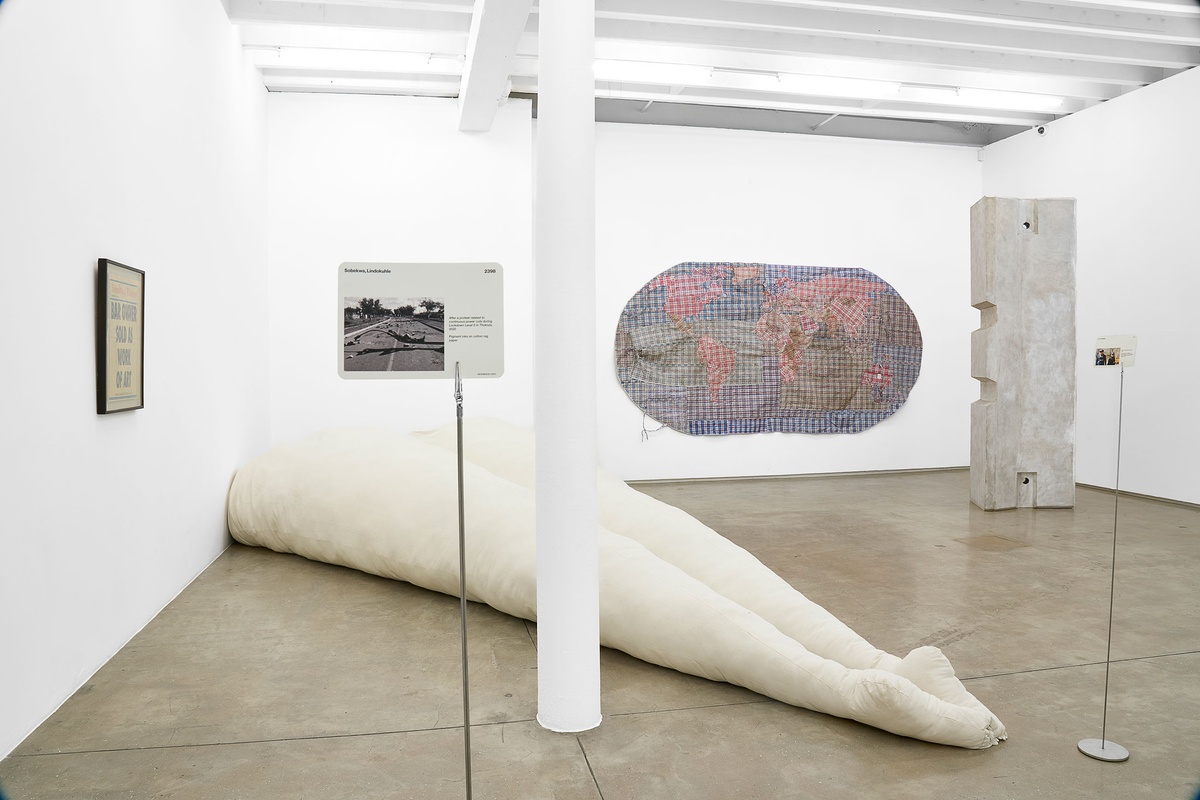Dan Halter

Cartography sits on an axis of pictorial representation and geometric abstraction. For Dan Halter, who brings the ‘red-white-blue’ bag into the dialogue, the map has been a tool to talk about migration, national identity and geopolitical power. Its fabric was originally invented as a tarp for construction sites, agricultural structures and temporary shelter in Japan. It was first transformed into a light-weight tote in the 1960s by a tailor in Hong Kong, but quickly became synonymous with the aesthetic language of border-crossing. In Nigeria, the bag is known as the ‘Ghana Must Go bag’, in South Africa, the ‘Zimbabwe bag’, in Germany, ‘Tuekenkoffer’ (Turkish suitcase), and in Guyana, the ‘Guyanese Samsonite’ – each name referencing complex geopolitical situations in each location.
To use this bag as a material signals Halter’s contemplation over borders, especially the Zimbabwean-South African border, in relation to his own nationality. He drives this further by including fabric of varying condition in the work – some pieces are tattered, some in mint condition – to indicate areas of high emigration (used bags for Syria, Mexico, the DRC amongst others) and high immigration (new bags for Australia, the US, France amongst others). Creating a large-scale map that is the sum of many parts, Halter worked with Sibongile Chinjonjo, a Zimbabwean seamstress and refugee living in South Africa, to stitch Rifugiato Mappa del Mondo (2013) together.
The work’s Italian title calls to mind Alighiero Boetti’s La Mappa del Mondo (1989-94), a series of embroidered world maps created over the 1970s/80s, which in turn for Boetti, evoke the European medieval world-making tradition of Mappa mundi. To trace this etymology back to Latin reveals another link: ‘mappa’ means ‘sheet, fabric’ and ‘mundi’, ‘world’, and what fabric would more accurately speak to the contemporary world than the red-white-blue woven plastic? The tarp exists as a sign of the times, a flag of the ‘other’, the border, movement, and migration.
b.1977, Harare; works in Cape Town
In works darkly wry and poignant, Dan Halter considers the political and economic dissolution of his native Zimbabwe. The country serves as the fulcrum around which all Halter’s thematic concerns gather, the conceptual and geographic point from which he considers Africa’s colonial histories, new national identities, and the continued displacement of people. In the most modest of objects, Halter finds a metonym for the migrant experience; matches, banknotes, discarded clothes. The ubiquitous Zimbabwe bag is of recurring significance in his work, a cheap red-white-blue tote that has become synonymous with Africa’s border crossings. Trading new bags for those of foreign nationals and refugees, the artist accumulates these objects of passage – “these worn-out membranes,” the artist writes, which “carry the record of travel in their grimy patina.” Halter, too, trades new words for old phrases. Zimbabwean proverbs, the Communist Manifesto, a short story by Jorge Luis Borges; he works at found language as he works at found objects, studying its worn-out sayings, its historical grime. With these borrowed signifiers – these bags and phrases – Halter distils the intractable political present into image and word.


